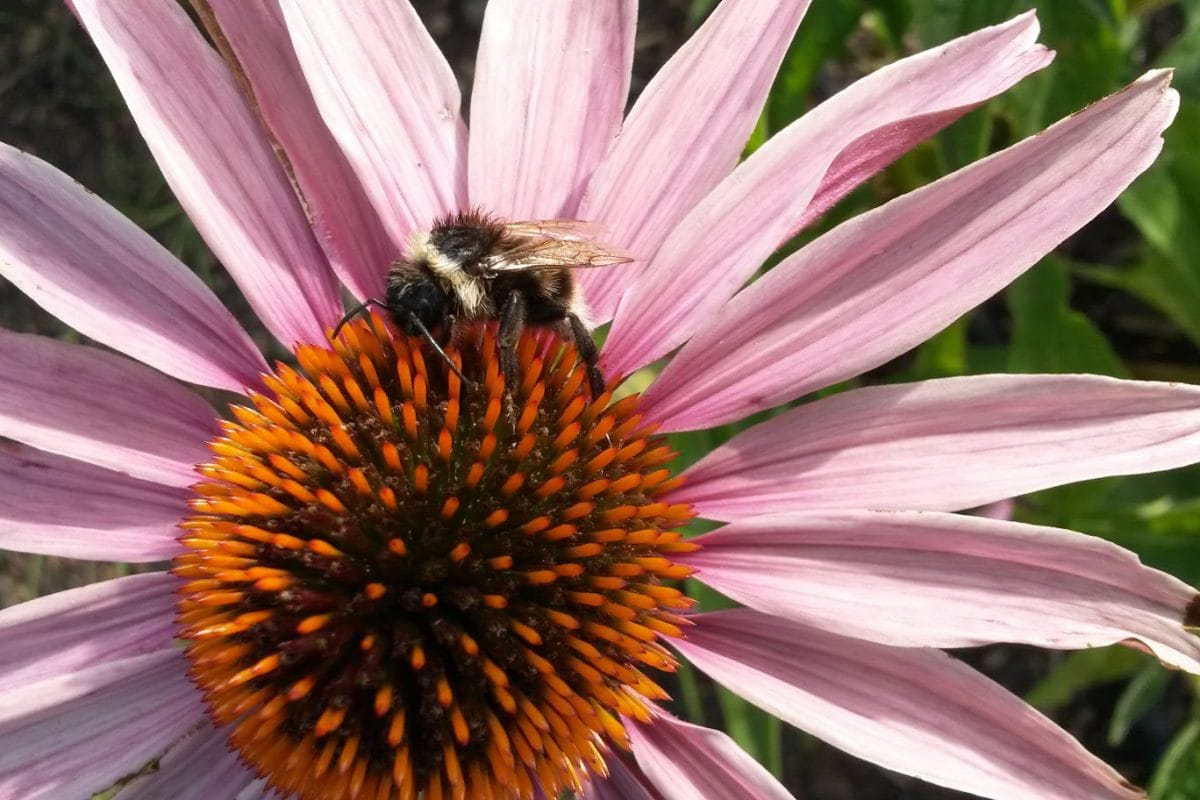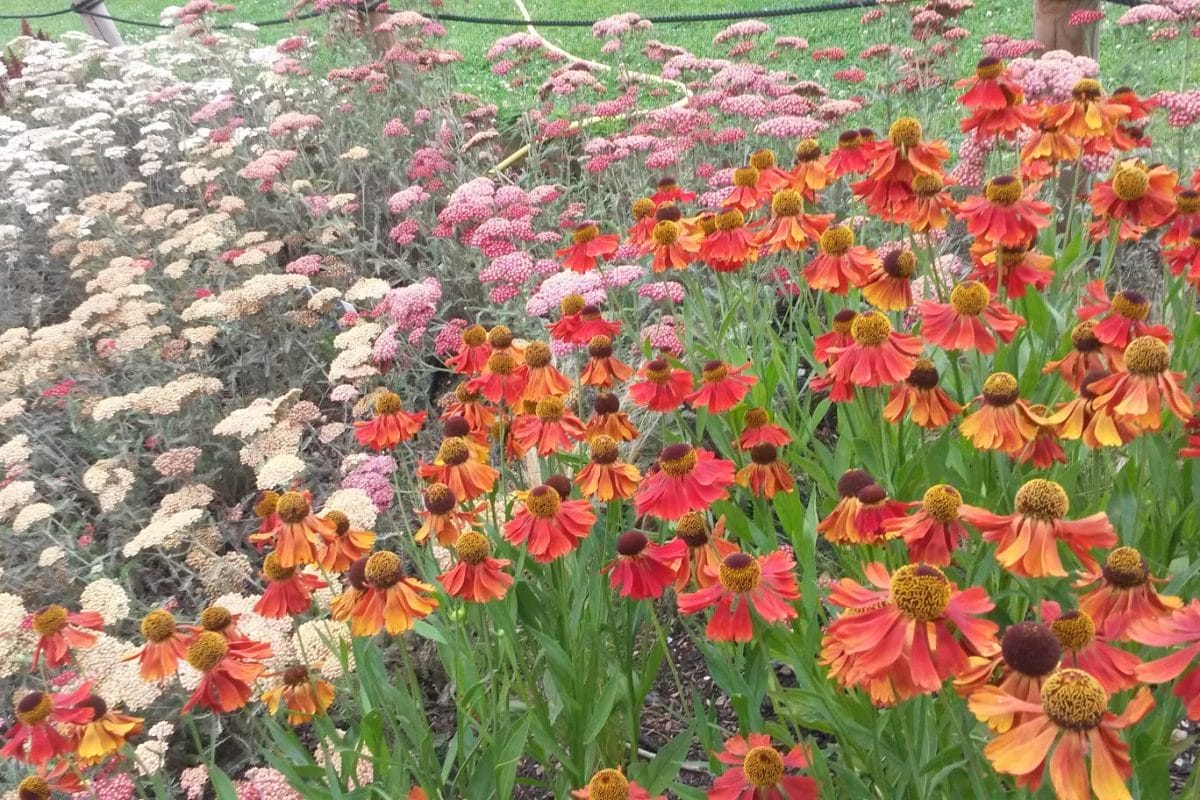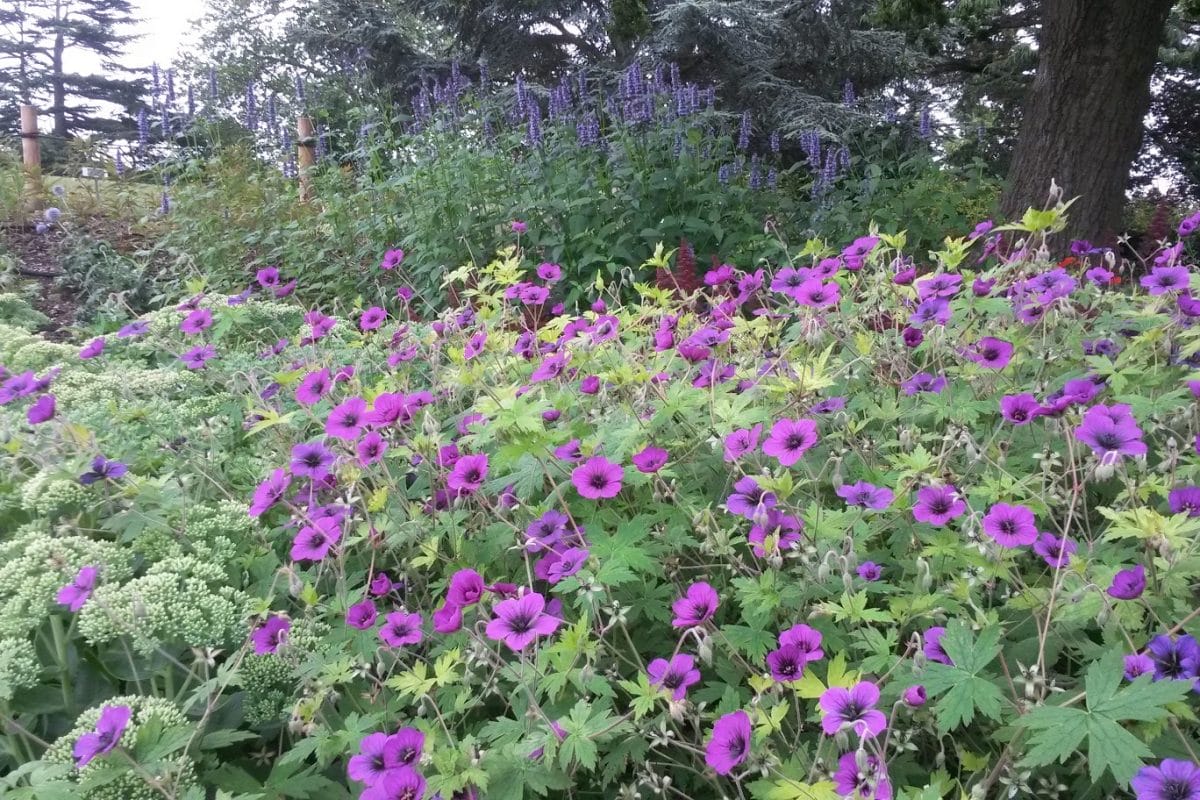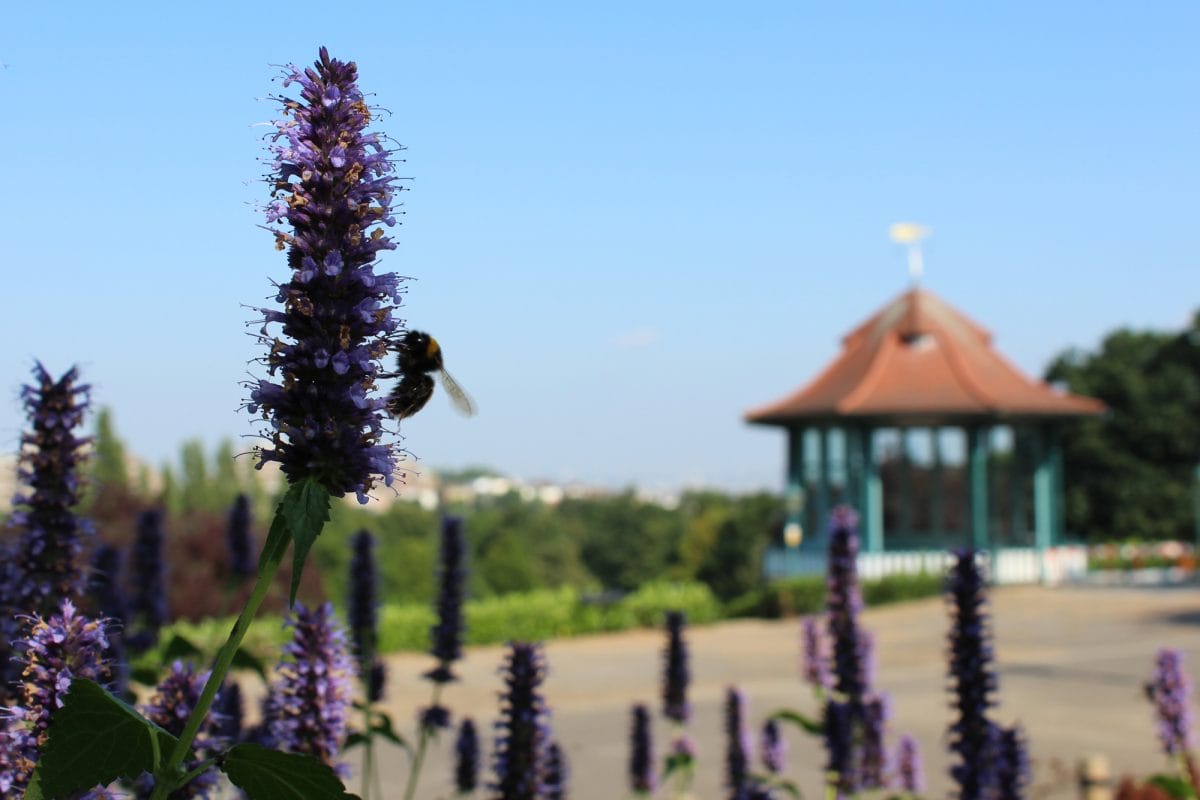This summer, you may have noticed a new border spring into life in the Gardens.
Last autumn we started to plant up the bandstand terrace bed with herbaceous perennials, which began flowering in the spring, and are still going strong, creating a lovely splash of colour. Over the next couple of years, they will get bigger and fill out the bed.
This border contains about 50 different species of plants and has been designed to be attractive to pollinating insects. Pollinating insects like bees, hoverflies, moths and butterflies transfer pollen from one flower to another, helping the plants to fruit and set seed.
As farming practices have changed over the last few decades, there has been a steep decline in the wild flower population that was previously their main food source. As a result, many of their populations are in decline.
This may result in problems in the future with food production, as so much of our food is reliant on plants being pollinated, so it is important to help them out.
There are many different pollinators, and there is no one plant that is a good food source for them all, which is why variety is important.




Some flowers, like those in the daisy family, are popular with a variety of pollinators. The flower head is made up of many small florets, each one a nectar source for the insects. This includes flowers like the Echinacea purpurea (Purple coneflower), and the Echinops ritro Veitch’s Blue (Southern globethistle).
Other flower shapes are not so simple. The Salvia guarantica ‘Black and Blue’ (Hummingbird sage) has lipped flowers with long tubes. Bumble bees and solitary bees use the lip as a landing platform and push their heads inside the flower to reach the nectar, coming back out with pollen covering their back.
Others, such as the Lychnis chalcedonica (Maltese cross), have their nectar deep inside a small tubular centre to the flower, which moths and butterflies are able to access with their long thin tongues.
As well as planting a variety of different plants, it’s a good idea to try and create a display that has a long flowering season – especially early and later in the year, when alternative nectar sources might be scarce.
Winter/spring bulbs like Crocus, Galanthus nivalis (Snowdrop) and Eranthis hyemalis (Winter aconite) can provide a food source early on in the year, while plants such as Salvia and Rudbeckia (Coneflower), that continue flowering into the late summer and early autumn, cover the other end of the year.
Over the next few years, we’ll continue to tweak the planting display. We’ll be adding some more spring bulbs, as well as assessing how well the plants are doing, and replacing any that have died or are struggling. We’ll keep a good mix of variety and seasonal food source for the pollinators, as well as ensuring there is a long lasting and colourful display for all our visitors.
If you want to help out at home, you can. A list of pollinator-friendly plants can be found on the Royal Horticultural Society website. By adding any of these plants to your garden, you’ll be doing your bit. You don’t even need much space. A window box full of spring bulbs or a pot with a couple of sunflowers in will be a welcome refreshment for the pollinators flying around your area.
Send us your pictures of pollinator-friendly plants using the hashtag #Horniman.
The Pollinator boarder has been created with support from the Finnis Scott Foundation.


